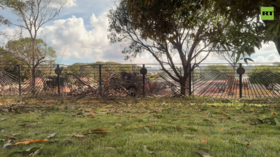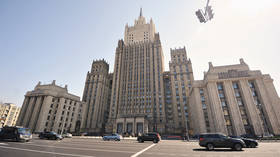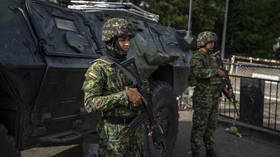‘Our count is low’: Behind the latest Iraq war-death study
A new study says the US-led war in Iraq killed over 400,000 people, with conflict-driven migration claiming 55,000 more lives. Amy Hagopian, one of the authors of the report, tells RT why the actual death toll is likely much higher than the estimate.
The study, a collaborative effort between researchers in the US,
Canada and Iraq, was recently published in the journal PLoS Medicine.
The researchers, employing the most scientifically rigorous
methodology to date, determined that 460,800 people had died
through either direct or indirect causes stemming from the 2003
invasion and subsequent occupation which officially ended in
December 2011. An estimated 55,800 more deaths were projected to
have been caused by the extensive migration in and immigration
from Iraq as a result of the decade-long conflict.
Hagopian, an associate professor at the University of Washington
Public School of Health, argues that previous studies have
underestimated the number of dead, why indirect deaths are just
as much a part of military engagements as direct causalities, why
war should be viewed as a public health crisis, and how more
rigorous research can help illuminate the likely cost to be
incurred the next time our leaders sound the call for invasion.
RT:Why did you decide to undertake the study now?
Amy Hagopian: We were trying to conduct a survey and an
estimate of deaths more or less approximated the end of the US
occupation and provided a summary estimate of deaths from that
conflict.
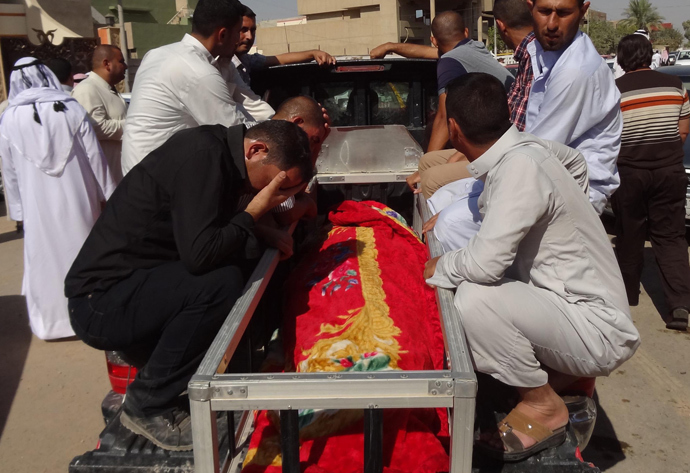
RT:Can you tell us about the make-up of who died, were
they mostly civilians or militants? Did you also count deaths
from those who were killed in IED attacks and terror attacks
after the fall of Saddam?
AH: Let me tell you how we did the study by way of
answering your question. We did a very sophisticated sampling
method to choose 100 neighborhoods across the country of Iraq,
which we chose at random using a population weighted system,
Google Earth, grids and so on which I won’t get into. But it was
a very well-selected sample and we knocked on 20 doors in each of
those 100 neighborhoods to get 2,000 households, and we asked
every household: who lives here, who lived here before the war
started, who was born, who died, and if they died, what did they
die of? We were able then to calculate death rates from the
period of before the war began and from the period of after the
war began. We multiplied those rates times the population and
calculated what we believe was excess mortality, that is, the
number of people who died who shouldn’t have died.
Then we were able to learn a little bit about what they died of.
We did not ask people if the person who died was a militant, or a
combatant, or a baker, or a bus driver. First of all, we didn’t
have time to ask those questions, second of all, I doubt people
would have told us, and third of all, it’s sometimes very hard to
tell who is a combatant. If you go to work as a baker and at
night you build a car bomb, what are you exactly; a baker or a
car bomb maker?
RT:Other studies have put the number of casualties in
Iraq significantly lower than the one you came up with. Why do
you think that is?
AH: Actually other studies have been higher; there are at
least three studies that are higher than ours and only a couple
that are lower.
RT:So why so much deviation from the data you got?
AH: Because the science on doing these sorts of studies is
not as sophisticated as we would like, and it’s one of the points
I would like to make. The science funding agencies in the world
out to consider war to be a very serious public health problem
and ought to invest in supporting academics to do this sort of
work and refine our methods. Our researchers were all volunteers,
because no one funds this work.
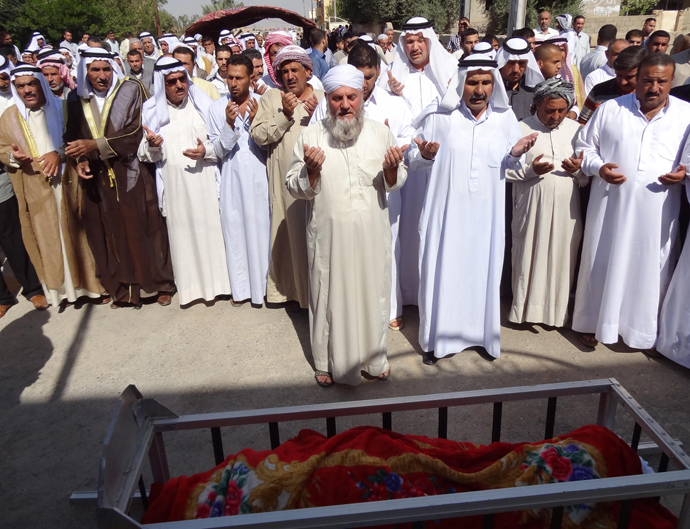
RT:Do you think your work can set a new benchmark or a
new standard for judging causalities after a big, messy conflict
like something that happened in Iraq?
AH: To some extent. I have a lot of confidence in the way
we selected the sample, the quality of the people who went door
to door, and the ability they had to get answers. One major flaw
of this study is that households that experienced a great deal of
violence were very likely to leave the country. Those who
experienced violence tended to be of the upper classes and the
intelligentsia, and they had the resources to leave the country.
Therefore, when we knocked on doors, those people were no longer
in Iraq to tell us about the deaths in their households. So we
have a survivor bias – that’s an epidemiological term. We are
pretty sure we missed a lot of people who might have told us
about deaths, because those people have left. So we think our
count is low.
RT:So you have the raw data that you were looking at.
Can you draw any conclusions from that data at this point,
especially any conclusions as to how the number of deaths could
have been reduced?
AH: Well, we know that about a third of the deaths were
attributable to something other than direct violence. That is,
these were people who died of heart attacks or some sort of
indirect death [like] cancer. We think it’s attributable to the
war because it’s a death in excess of what should have happened,
but it was not as a result of a shooting.
So one thing that we can conclude from our study is that war
creates a great deal of havoc and disruption in a country, it
screws up the water and the health delivery system, and the
transportation and communication systems, and people die because
of that. We need to get better at counting those deaths so that
when countries are contemplating an invasion, they can better
calculate what they anticipate the toll of that invasion will
be.
RT:There was some poll that you had mentioned that had
put the number of deaths at more than you had concluded, and
there were some, especially from the US and UK that show that it
was significantly less. What do you think is the discrepancy
between the data that showed less casualities then you had
accounted for in your report?
AH: There are two different ways of doing this kind of
estimation. Ours is a public health science way where we do
random sampling because that’s the most likely way to get a
representative proportion of the population. It has to be a large
enough sample, and we conduct surveys, we calculate rates, and we
do biostatistics.
The other camp in this estimation effort does newspaper
clippings. So they try to find out all the reports of deaths that
have appeared in newspapers or in official reports and in those
sorts of things and they collect those and they count deaths. So
now one obvious way in which the two approaches are different is
that ours includes indirect deaths and theirs does not. Second of
all, it’s fairly well established that the newspaper clipping
group is going to miss any death that isn’t reported. And many
deaths in war go unreported to official sources or in the
newspaper.
The statements, views and opinions expressed in this column are solely those of the author and do not necessarily represent those of RT.



